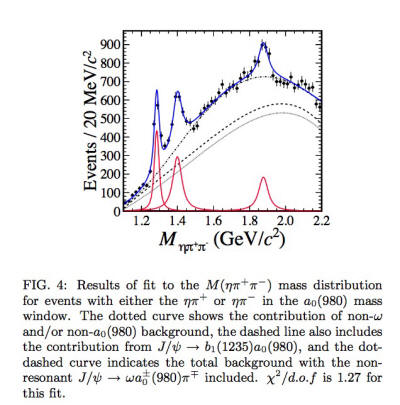Time:2011-12-15ClickTimes:
Searching for the non-conventional hadron states (multi-quark, hybrid, glueball, etc.) is a major topic in the field of experimental high energy physics. X(1835), which was first observed by BESII, is considered to be the most promising candidate of the pseudo-scalar glueball. Recently, Kun Liu and his Ph.D advisor Prof. Yajun Mao from the School of Physics of Peking University, along with their collaborator Dr. Shan Jin from the Institute of High Energy Physics, observed a new ηππ resonant structure X(1870) with a significance of 7.1σin the channel J/ψ→ωηππ, using the 225M J/ψ decay events accumulated by the BESIII detector. This resonant structure could be interpreted to be the counterpart of X(1835) produced in the hadronic decay of J/ψ. Besides X(1870), the ηππ mass spectrum also shows a clear signal of η(1405), which is regarded as another hot candidate of the pseudo-scalar glueball. The first precise measurement of their production width in the hadronic decay of J/ψwillprovide vital information for glueballstudy. This analysis has been published on Phys. Rev. Lett. 107, 182001 (2011).

|
BESIII (Beijing Spectrometer III) and BEPCII (Beijing Electron Positron Collidar II) is an major upgrade of the old BESII/BEPC, aiming at the study of hadron spectroscopy as well as τ-charm physics. BESIII started its first successful data run at May 2008, and has accumulated the world’s largest data sample of J/ψ decay. The high energy physics group of Peking University, under the leadership of Prof. Yajun Mao, participated in every aspects of the BESIII experiment, including detector simulation, development of analysis software and the data analysis. This analysis is the 5th PRL paper published by BESIII, meanwhile it is also the 2nd PRL paper in which the HEP group of Peking University has made the major contribution.
